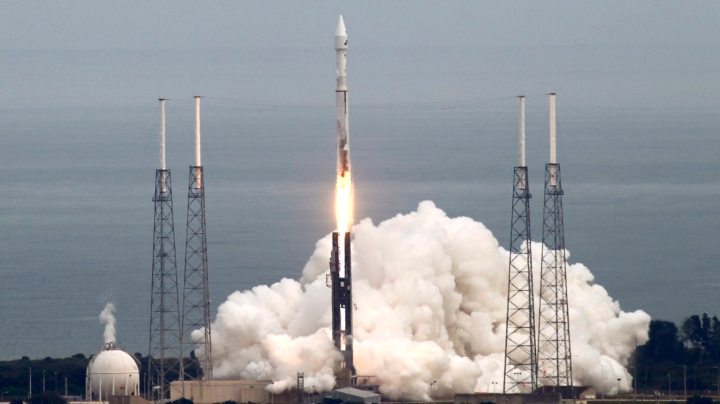World
NASA satellite launched to find clues about Mars’ lost water

An unmanned Atlas 5 rocket blasted off from Cape Canaveral Air Force Station in Florida on Monday, sending a Mars orbiter on its way to study how the planet most like Earth in the solar system lost its water. By Irene Klotz.
Unlike previous Mars probes, the Mars Atmosphere and Volatile Evolution Mission, or MAVEN, will not be looking at or landing on the planet’s dry, dusty surface. Instead, MAVEN will scan and sample what remains of the thin Martian atmosphere and watch in real-time how it is peeled away, molecule by molecule, by killer solar radiation.
The first step of the planned year-long, $671 million mission was getting MAVEN into space. The satellite, tucked inside a protective nosecone, lifted off aboard a United Launch Alliance Atlas 5 rocket at 1:28 p.m. EST/1838 GMT to begin a 10-month flight to Mars.
United Launch Alliance is a partnership of Boeing and Lockheed Martin.
Upon arrival, MAVEN will fire its braking rocket to put itself into a highly elliptical orbit around Mars, which will allow it to dip down as close as about 65 miles (105 km) from the ground to gather air samples for analysis.
At its highest point, MAVEN will be about 3,728 miles (6,000 km) away, a vantage point for measuring how much and what types of radiation are sweeping past the planet from the sun and cosmic sources.
The point of the project is to determine how much of the atmosphere is being lost to space today and extrapolate back in time to figure out what was happening in Mars’ past.
EARTH’S LOST TWIN?
In the 49 years since NASA’s Mariner 4 spacecraft flew by Mars for the first time, an increasingly more sophisticated series of orbiters, landers and rovers have amassed solid evidence that the fourth planet from the sun was once much more like Earth, with oceans, rivers, rain and snow.
“We see a lot of evidence for liquid water having flowed over the surface in ancient times. We see river channels, features that look like there have been lakes inside of impact craters. We see minerals that form only in the presence of liquid water,” said lead scientist Bruce Jakosky, with the University of Colorado at Boulder.
“All of these suggest that there has been water on the planet early in time and today of course we see a cold, dry, desert-like planet,” he said.
Figuring out what happened to Mars’ climate hinges on learning what happened to the planet’s water and the once-thick atmosphere needed to keep Mars warm enough for surface water.
The information also is expected to help scientists home in on when in Mars’ history it may have been most suitable for life to evolve.
NASA’s ongoing Curiosity rover mission is scouting for potential habitats that could have supported microbial life.
“Water is a requirement for life and if we understand where the water has been and why it’s not there anymore we can learn more about what the history of the potential for life has been,” Jakosky said.
There are two options for where the planet’s missing water and atmosphere went: down into the ground or up into space.
Scientists know some of the planet’s carbon dioxide ended up on the surface and joined with minerals in the crust. But so far, the ground inventory is not large enough to account for the early, thick atmosphere Mars would have needed to support water on its surface.
MAVEN is designed to explore the other option, that the water and atmosphere were lost into space, a process that began about 4 billion years ago when the planet’s protective magnetic field mysteriously turned off.
“The sun, the solar wind can drive processes that remove gas from the top of the atmosphere. We want to understand whether the sun was able to remove gas from the top of the atmosphere and how much,” Jakosky said.
MAVEN is due to reach Mars on Sept. 22, 2014 – two days before India’s Mars Orbiter Mission, which launched on Nov. 5. India’s probe has been raising its orbit around Earth and should be in position on Dec. 1 to begin the journey to Mars. DM
Photo: An Atlas 5 United Launch Alliance rocket lifts off from the Cape Canaveral Air Force Station carrying NASA’s Mars Atmosphere and Volatile Evolution (MAVEN) spacecraft in Cape Canaveral, Florida November 18, 2013. The unmanned Atlas 5 rocket blasted off from Cape Canaveral Air Force Station in Florida on Monday, sending a Mars orbiter on its way to study how the planet most like Earth in the solar system lost its water. REUTERS/Michael Berrigan




















 Become an Insider
Become an Insider